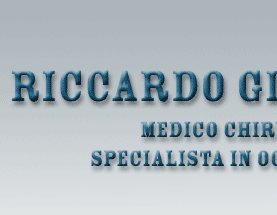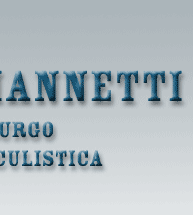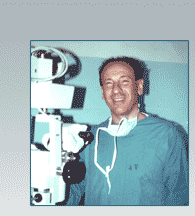 |
 |
 |
|
|
Phacoless “nucleuscapture” by Riccardo Giannetti, MD
Special in OCULAR SURGERY NEWS Small-incision cataract surgery is state-of-the-art for faster and satisfactory visual rehabilitation. Regardless of whether this goal can be reached with or without phacoemulsification, the important factor in my opinion is that each surgeon should attain confidence with both procedures. Consider the following. -By employing phaco technology, one can use very small tunnels and implant foldable or new microfoldable -On the other hand, many surgeons are interested in acquiring the advantages of a small-incision procedure, without the long and risky learning curve, high cost and complexity of phacoemulsification. Since 1991, after reading and hearing about Conjunctival flap When a sclero-corneal tunnel is planned, a small conjunctival flap is dissected directly with the same diamond blade by which a straight pre-incision is constructed most frequently The incision is placed at the axis of greatest corneal curvature as determined by preoperative keratometry to reduce pre-existing astigmatism. For last three years, in approximately 150 cases, my technique has involved phacoless extraction through a tunnel length of In 1991 and 1992, before passing to the routine, straight no-stitch tunnel, I had performed a one-stitch modified Masket suture. With my technique, I do not place……..because tunnel placement and width is determined by the amount of preoperative corneal astigmatism, as shown in the nomogram derived from follow-up of my first 400 cases. When preoperative astigmatism is lower than 0.75 D with-the-rule, I usually place the no-stitch tunnel In cases of higher than 0.75 D with-the-rule astigmatism, the tunnel is placed superiorly at the axis of greatest curvature as shown in the nomogram.
Tunneling sculpting After a wet-field cauterization, a diamond knife is used to make a straight incision at a planned distance from the limbus of approximately one-half thickness. No side port incision is required with “nucleuscapture”. The groove, the complete tunnel carving of Viscoat (chondroitin sulfate, sodium hyaluronate, Alcon) or Healon GV (sodium hyaluronate Pharmacia) is Injected in the anterior chamber, and a continuous circular anterior capsulorhexis is made by employment of forceps. Capsular hydrodissection Using a 27-ga needle, a capsular hydrodissection is performed lifting the edge of the capsulorhexis at the distal border, softly forming a tent-like space beneath the capsule and avoiding touching the cortex. Next, balanced salt solution is continuously injected until there is evidence of a complete posterior capsule dissecting wave. At this point, the nucleus is pushed down using the same 27-ga needle, for a complete proximal dissection. The needle immediately starts a cortical straight sculpting until reaching the inner epinuclear plane in which balanced salt solution is injected peripherally and quickly to obtain the golden ring reflex of hydrodelineation. In most cases, central anterior cortex is then aspirated with a common 0.5 I/A tip for better visualization of capsulorhexis and to create a cleaving plane to facilitate the internal nucleuscapture. Hydrodelineation is further performed in the posterior nuclear space and completed with Healon (viscodelineation). Next, the inner nucleus can be hooked up and rotated in the anterior chamber ; this maneuver can be enhanced by employment of the ”nucleuscapture hook”, manufactured under my own specifications. Freeing the inner nucleus from all cortical material with a viscoelastic enables the introduction of a small lens loop or the “nucleuscapture spoon” beyond the nucleus, slipping on the posterior cortex. Then, a small hooked “nucleuscapture spatula” is placed on top of the nucleus, thus sandwiching it between the lens loop needle and spatula. The nucleus is “captured” and extracted with a two-handed technique and delivered trough the tunnel with a real two-hand control of the procedure. Occasionally, especially in small tunnels or hard nuclei, the anterior portion of the nucleus will be sheared off with this technique, but this “epinucleus” is nearly always soft and is easily aspirated with first the Most of the retained epinucleus will usually irrigate out through the tunnel and will not require aspiration. Thanks to capsular hydrodissection, the cortex is quickly aspirated using the automated 0.5 mm/0.3 mm tip. Viscoelastic material is injected in the capsular bag. I have used Healon, Viscoat and Occucoat (hydroxypropyl) methylcellulose, Storz); all appear to work well but my preference is Viscoat for capsulorhexis maneuvers and Healon for all other procedures. Implanted IOLs were mainly Allergan AMO PC52ANB – an extremely flexible PMMA IOL with a 5-mm optic and 12-mm overall diameter. Also frequently employed were Allergan AMO PC 43NB, with a 5.5-mm optic and 12-mm overall diameter. In cases involving large tunnels, the Allergan AMO PC59TB may be suitable for in-the-bag capsulorhexis implantation despite the overall 13.5-mm diameter, due to the extreme flexibility of the loops. The procedure to ensure implantation in the capsular bag can be facilitated by using a straight pusher to guide the IOL proximal loop into the bag avoiding touch to any tissue. After viscoelastic material is removed with the same I/A tip, the self-sealing effects of the tunnel incision is tested by inflating the anterior chamber with balanced salt solution through the tunnel itself. As IOP reaches the normal range, pressure within the eye will work just to close the wound. Since 1993, I have not placed sutures to close the incision. Closing conjunctival flap When planned, the conjunctival flap is closed with bipolar wet-field cautery. I have never encountered a nucleus that was impossible to squeeze out, although a rare few have required a fair amount of manipulation especially in the first year. A great number of surgeons at present use planned extracapsular catarsct extraction as their procedure of choice. Those surgeons who routinely use phacoemulsification will frequently deal with very hard nuclei or small pupils in which they want to do a planned extracapsular extraction. Nucleuscapture works well for all pupil sizes and all types of nuclei. Luxated cataracts are a relative contraindication; however, in one case I have used nucleuscapture to remove a dislocated lens from the vitreous intracapsulary, sandwiching the lens between the two instruments to extract it from the eye across a temporal 7.5-mm no-stitch large sclerocorneal tunnel. Managing complications A complications that might be encountered with nucleuscapture is a non-intentional breaking of the inner nucleus into two pieces while attempting to extract it from the eye. The situation is handled quite easily by rotating the residual portion of the nucleus with the spatula so that it is oriented along the surgical meridian and repeating the maneuver. Brunescent nuclei can be removed through a 6.5-mm tunnel following nucleuscapture. In the case of the 5.2-mm tunnel, the removal is accomplished by purposely breaking the inner nucleus into two pieces and removing them separately following the McIntyre/Kansas technique. In developing my procedure, one of my concerns was the effect one the endothelium of pulling the inner nucleus throughout the tunnel. I had expected to see a strip of damaged endothelium at the surgical limbus. However, this has not been noted, for the main pressure of the nucleus appears to be at the edge of the external tunnel wound and the anteriorly on the cornea. In my experience, the appearance of postop corneas was also better than in cases done with two-handed phacofraction as revealed by evaluation of endothelial cell count in 40 follow-up cases at one month after surgery. My experience with nucleuscapture has been that planned sutureless tunnel incision not only appears to control or reduce preoperative astigmatism, but also appears to be more stable than those with any type of suture used in the past. With the no-stitch self-sealing tunnel, I have found deeper anterior chambers and less hyphema. Patients experience no foreign body sensation due to the absence of sutures, and the great majority of them are able to go home one day postoperative without a shield and immediately resume rigorous activities. The patients, surgeon and patient-care personnel are equally pleased with the results of nucleuscapture described here.
|
||
|
Studio: Viale Carducci 86/a - 57124 Livorno - PI 00656480498 - tel 0586405924 - fax 05861945075 |
||